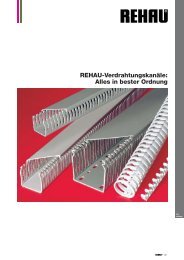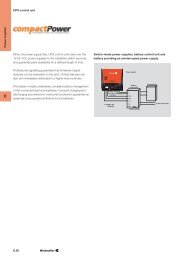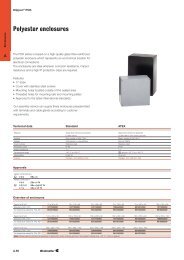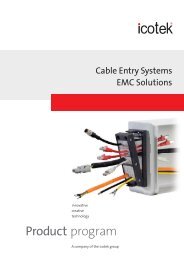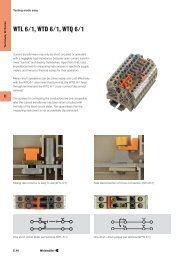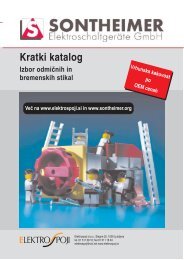Electronics Interface units and PLC solutions
Electronics Interface units and PLC solutions
Electronics Interface units and PLC solutions
- No tags were found...
You also want an ePaper? Increase the reach of your titles
YUMPU automatically turns print PDFs into web optimized ePapers that Google loves.
Byte precabling system<br />
<strong>PLC</strong> system interface<br />
Byte precabling solution<br />
Wiring <strong>and</strong> circuitry is becoming increasingly complicated as a<br />
result of the growing complexity of machines <strong>and</strong> systems in<br />
process, automation <strong>and</strong> building services control systems.<br />
Conventional connections (point-to-point wiring) between <strong>PLC</strong><br />
controllers <strong>and</strong> peripheral devices results in high installation <strong>and</strong><br />
commissioning costs. The Weidmüller range of <strong>PLC</strong> system<br />
interface products provides the user with a quickly <strong>and</strong> easily<br />
installed output level for SIEMENS SIMATIC ® S7.<br />
The specific front adapters replace the usual screw terminal<br />
technology used on the <strong>PLC</strong> input/output cards. 40- or 10-pole<br />
connectors transfer the <strong>PLC</strong> signals to the active or passive<br />
components via pre-assembled control leads.<br />
The <strong>PLC</strong> signals are converted either<br />
• in double word mode to a 40-pole ribbon cable connector,<br />
or<br />
• in byte mode to 4 ribbon cable connectors each with 10 poles.<br />
• <strong>PLC</strong> I/O cards usually have two connection systems:<br />
• screw clamp,<br />
• crimp connectors.<br />
In both cases, the signals have to be wired individually with the<br />
corresponding connection elements.<br />
Disadvantages of individual wiring:<br />
• High assembly costs<br />
• The risk of wiring mistakes increases with the number of<br />
individual wires at one point<br />
• Requires considerable space in the switchboard<br />
• High installation workload<br />
• Time-consuming routing <strong>and</strong> assembly of connecting leads<br />
• High labelling <strong>and</strong> documentation workload<br />
System advantages<br />
• Fast<br />
– Reduced planning <strong>and</strong> design times<br />
– Time-saving installation<br />
– Less time required for commissioning <strong>and</strong> troubleshooting<br />
– Minimised wiring effort on site thanks to plug-type connectors<br />
• Safe<br />
– Rules out the risk of wiring mistakes<br />
– Clear organisation in the switchboard (system cable instead<br />
of individual wires)<br />
– Marking corresponds with <strong>PLC</strong><br />
– Additional individual marking<br />
• Variable<br />
– Multitude of about 40 different I/O components<br />
– Variable cable lengths<br />
– Modular design of all components<br />
– 1 x 4 byte <strong>and</strong> 4 x 1 byte system designs without signal<br />
routing module<br />
– Functions mixed by byte to an input or output level<br />
– Expansion possible without difficulty<br />
– Flexibility due to simple swapping of input/output interfaces<br />
• Small<br />
– Saves space in cable ducts<br />
– Small module widths<br />
– No terminal levels<br />
D<br />
Use of <strong>PLC</strong> front adapters<br />
D.3






